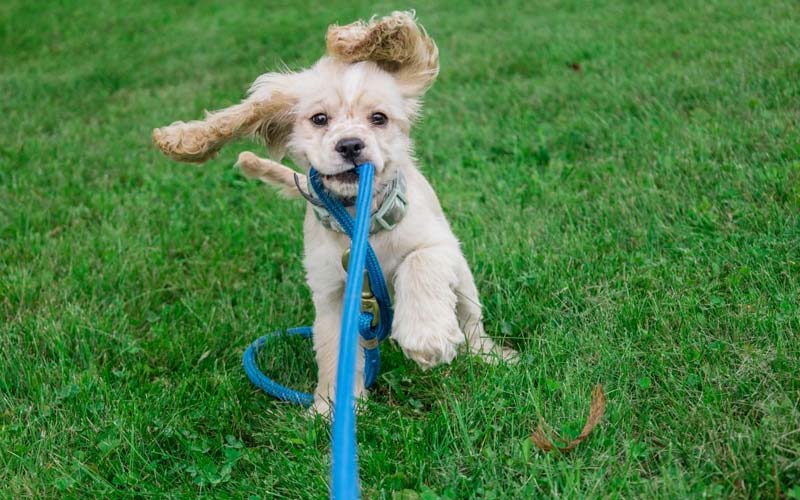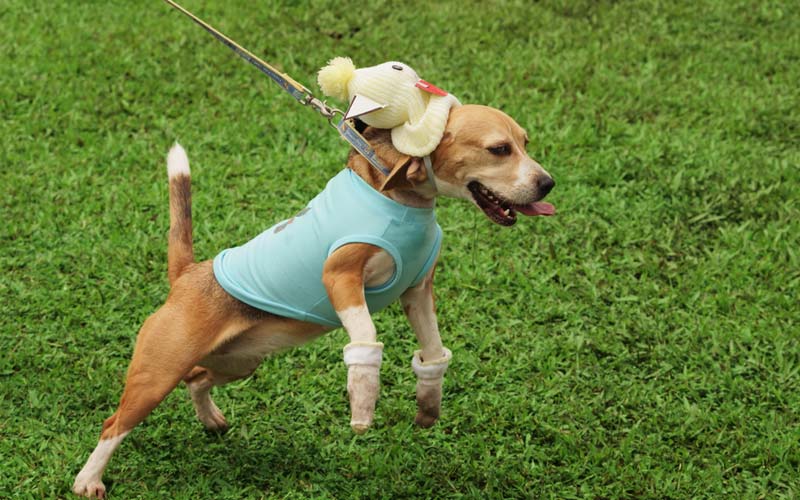Walking your dog should be a relaxing and enjoyable activity, but for many owners, leash pulling turns it into a frustrating struggle. Whether it’s excitement, curiosity, or lack of training, dogs often tug at the leash, making walks difficult and even unsafe. This common behavior is not only hard on your arms and shoulders but can also strain your dog’s neck and impact their behavior in other ways.

Understanding why your dog pulls is the first step toward solving the issue. Dogs naturally explore their environment with enthusiasm, and without proper training, they may not realize that pulling is unwanted. Additionally, factors like using the wrong equipment or inadvertently reinforcing the behavior can exacerbate the problem.
In this article, we’ll dive into the causes of leash pulling and provide effective strategies to teach your dog better walking habits. From choosing the right tools to using proven training techniques, you’ll gain practical tips to make walks enjoyable for both you and your furry companion. Let’s turn those tense leash-pulling sessions into calm, controlled strolls.
1. Why Do Dogs Pull on the Leash?
Leash pulling is a common issue for many dog owners, and understanding the reasons behind this behavior is key to addressing it effectively. Here are the main factors that contribute to leash pulling:
Excitement and Overstimulation
Dogs experience the world primarily through their senses, particularly smell. During walks, they encounter an overwhelming variety of scents, sights, and sounds, which can be incredibly stimulating. This sensory overload often makes dogs eager to explore everything at once, leading them to pull on the leash to get closer to interesting stimuli.
Instinctual Behavior
Dogs are natural foragers and hunters, instincts inherited from their wild ancestors. This drive often translates into a desire to lead and explore during walks. Additionally, some breeds, like Huskies or Retrievers, may have a stronger tendency to pull due to their working or sporting backgrounds, which involve leading or pulling tasks.
Opposition Reflex
The opposition reflex is a natural response where a dog pulls harder when they feel resistance from the leash. When pressure is applied to a dog’s neck, chest, or shoulders, their instinct is to push or pull against it. This reflex can create a cycle of tension and resistance, making pulling worse.
Lack of Training
Without consistent training, dogs don’t automatically understand leash manners. Many dogs aren’t taught to walk calmly beside their owner, so they assume pulling is acceptable or even encouraged.
Reinforcement of the Behavior
Unintentionally, many owners reinforce leash pulling by allowing their dogs to move toward what they want. For example, if a dog pulls to reach a park or sniff a tree and succeeds, they learn that pulling is an effective way to achieve their goals.
By identifying these root causes, owners can implement targeted strategies to reduce leash pulling and create more enjoyable walks for both themselves and their pets.

2. Consequences of Leash Pulling
Leash pulling may seem like a minor nuisance at first, but it can lead to significant physical, emotional, and behavioral challenges for both dogs and their owners.
Physical Strain
For dogs, consistent pulling can cause pressure on their neck, throat, and spine, especially when wearing a traditional collar. Over time, this strain may lead to injuries, such as tracheal damage or neck pain. For owners, the repeated force of a dog pulling on the leash can result in muscle strain, joint pain, or even falls, particularly with larger or more powerful breeds.
Stressful Walks
A walk that should be enjoyable often turns into a battle for control. The constant tug-of-war can create frustration for owners and stress for dogs. Instead of being a bonding experience, walks become a source of tension, which may discourage regular exercise for both parties.
Behavioral Problems
Leash-pulling dogs are often harder to manage in public. The lack of control can escalate into other problematic behaviors, such as lunging at other dogs, barking excessively, or reacting unpredictably to distractions. Over time, these behaviors can make walks even more stressful and potentially unsafe for everyone involved.
Addressing leash pulling not only prevents these negative outcomes but also transforms walks into a positive and rewarding experience, fostering a stronger bond between dog and owner.

3. Tools to Address Leash Pulling
The right tools can make a significant difference when managing a dog that pulls on the leash. Here’s a breakdown of effective equipment options to help you regain control and make walks more enjoyable.
Harnesses
Harnesses are a popular choice for dogs that pull, but selecting the correct type is essential.
- Front-Clip Harnesses: These harnesses have a leash attachment at the chest, redirecting your dog’s forward momentum when they pull. This design encourages them to face you, improving control and discouraging pulling. Examples include the PetSafe Easy Walk Harness and the Ruffwear Front Range Harness.
- Back-Clip Harnesses: These attach at the back and are better suited for well-trained dogs. For pullers, back-clips often exacerbate the issue as they make pulling more comfortable.
Head Halters
Head halters, such as the Halti Headcollar or Gentle Leader, are designed to guide a dog’s head, similar to how a halter works for a horse. When a dog pulls, the halter gently redirects their head toward you, making it harder for them to lunge forward. While effective, these tools require proper fitting and gradual introduction to ensure comfort and avoid resistance.
Leash Selection
A standard 4–6 foot leash is ideal for controlling a pulling dog. Unlike retractable leashes, which encourage pulling by giving dogs more freedom, a fixed-length leash provides consistent feedback and helps reinforce good behavior. Look for sturdy materials like nylon or leather for durability.
Investing in the right tools, combined with consistent training, can significantly reduce leash-pulling behavior and enhance the overall walking experience for both you and your dog.

4. Training Techniques to Stop Leash Pulling
Addressing leash pulling requires consistent training methods to teach your dog how to walk calmly and focus on you during walks. Here are some effective techniques to transform your walks into enjoyable experiences:
Loose-Leash Walking
Loose-leash walking encourages your dog to stay by your side without tension on the leash.
- Start in a low-distraction area like your backyard.
- Hold the leash with some slack and begin walking.
- The moment your dog walks beside you without pulling, reward them with treats, praise, or a toy.
- Gradually increase distractions as your dog improves.
- This method reinforces calm behavior and builds your dog’s focus on you.
Stop-and-Go Method
The stop-and-go method teaches your dog that pulling halts all progress.
- Walk forward at a steady pace.
- If your dog starts to pull, stop immediately.
- Wait for your dog to release tension on the leash by stepping back or looking at you.
- Resume walking only when the leash is slack.
- Repeating this consistently helps your dog associate pulling with a lack of forward movement.
Turnaround Method
The turnaround method uses unpredictability to keep your dog attentive.
- When your dog begins pulling, change direction abruptly and walk the opposite way.
- Use a cheerful tone to encourage your dog to follow you.
- Reward them once they catch up and focus on you.
- This method discourages pulling by redirecting their focus to you rather than the environment.
Positive Reinforcement
Rewarding desired behavior is essential for long-term success.
- Use high-value treats, toys, or verbal praise when your dog walks calmly.
- Timing is crucial: reward them as soon as the leash slackens to reinforce the behavior.
Clicker Training
Clicker training is an excellent tool for marking good behavior.
- Start by associating the clicker sound with treats.
- When your dog walks without pulling, click immediately and reward.
- Over time, your dog will understand that walking calmly leads to positive outcomes.
By combining these methods and maintaining consistency, you can effectively train your dog to walk calmly on a leash, creating a stress-free experience for both of you. Regular practice and patience are key to success!

5. Tips for Long-Term Success
To effectively stop leash pulling and ensure long-term success, it’s essential to maintain consistency, patience, and a structured approach. Here are a few key tips to help you stay on track:
Consistency is Key
Practice the training techniques every time you walk your dog. Consistency is crucial for reinforcing new behaviors and helping your dog understand what’s expected. Each walk is an opportunity to reinforce calm walking habits, so make sure to stay patient and committed.
Short Training Sessions
Avoid overloading your dog with lengthy training sessions. Start with short, manageable intervals of 5 to 10 minutes to prevent frustration for both you and your dog. As your dog masters each step, gradually extend the training sessions to build endurance and focus.
Patience
Leash-pulling behavior often takes time to change, especially if the behavior has been ingrained. Don’t expect immediate results; progress may be slow but steady. Celebrate small milestones, such as a few steps of loose-leash walking, to keep both you and your dog motivated.
Seek Professional Help If Needed
If you’re struggling to make progress, it might be time to consult a professional dog trainer. A trainer can offer personalized guidance, identify potential underlying issues, and provide additional strategies for success. Don’t hesitate to reach out for professional help if the behavior persists.
By following these tips and maintaining a positive and patient attitude, you’ll set your dog up for long-term success and enjoyable walks ahead.

Conclusion to Why Does My Dog Always Pull on the Leash?
Leash pulling can turn what should be an enjoyable walk into a stressful experience for both you and your dog. However, with the right tools and consistent training, you can address this behavior and create a more relaxed and rewarding walking routine. We explored the main reasons behind leash pulling, from excitement and overstimulation to instinctual behaviors, and discussed effective training methods like loose-leash walking, the stop-and-go method, and positive reinforcement.
By using the right equipment, such as front-clip harnesses or head halters, and employing patience and consistency, you’ll start seeing improvements over time. Remember that training takes time, and small, gradual changes lead to lasting results. If you encounter roadblocks, don’t hesitate to seek professional help from a dog trainer who can guide you through the process.
Now it’s your turn: Start practicing these techniques during your next walk. Stay patient, be consistent, and celebrate your dog’s progress. With dedication, you’ll both enjoy the benefits of calm, controlled walks and build a stronger bond along the way. Let’s turn those frustrating moments into a thing of the past!